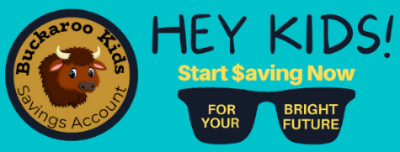Kids & Saving
 It is never too early to start teaching your kids the importance of saving money. Learning to save helps set goals, and shows how earning interest helps money grow over time. Here are some fun ways to get kids excited about saving.
It is never too early to start teaching your kids the importance of saving money. Learning to save helps set goals, and shows how earning interest helps money grow over time. Here are some fun ways to get kids excited about saving.Pretend to spend
Play Monopoly
Make It a Game
Match It
Let Them Make Their Own Purchases
Give Them a Budget
Make Them Part of the Process
Open their first Savings Account
There's an App for that!
Allowance Apps that Require a Bank Account
Chore Check
Price: $0 for basic services and $9 per month for Chore Check Pay, a service that includes electronic payments and a debit Mastercard.
Description: Chore Check gives families a choice of whether they want to use its basic services for free or pay $9 a month for an upgraded service that include a savings account and checking account, with a debit card, for the kids.
What Children Do with the App: Young people use the app to see what chores they have and how much they will receive for those chores. Once the chores are completed, kids can use the app to see how their earned dollars are allocated to their spending, savings and giving accounts. If their parent has signed up for a kid’s debit card then they are able to use their account to track the transactions they make with their debit card.
What Parents Do with the App: Parents use the app to create chores, schedule them and assign a dollar amount to each chore. As children complete each task, the parent approves whether the app can pull money from their own account to put into their child’s bank accounts.
Go Henry
Price: $3.99/per child/per month (your first month is free)
Description: GoHenry is similar to BusyKid except it focuses less on building work ethic and more on personal finance (and it’s been around longer—since 2012).
What Children Do with the App: Children or teens using the app have a dashboard where they can mark what tasks are complete. They also have a platform where they can track their spending transactions and habits, set saving goals and pledge to give a portion of their earnings to charity.
What Parents Do with the App: The parent dashboard acts as the “control center.” Parents can manage accounts for up to four children. They can control what chores to assign their child, what the rate will be for the chore, how much of an allowance the child will receive and how much money the child is allowed to spend from their checking account. Parents can control where the child can spend money, such as online or at a store and whether they can get cash at an ATM. Parents will also receive spending notifications.
Allowance Apps that Do Not Require a Bank Account
RoosterMoney Allowance Manager
Price: $0
Description: RoosterMoney is a digital finance tracking app that can be used by children as young as 4 years old. Instead of cash, you can slowly introduce the concept of earning and budgeting through stars. With older children, parents can switch from stars to money. The app can be linked to Alexa so children can ask Alexa what chores need to be done for the day.
What Children Do with the App: Younger children can trade in the stars they’ve earned for doing chores to get rewards instantly or save them for a reward in the future. While younger kids’ dashboard offers spend, save and goals accounts for stars, older children will see the same dashboard but with a dollar sign. They can use it as a digital ledger of their incoming and outgoing cash.
What Parents Do with the App: Parents can use the app to set themselves up as their children’s digital banker. They can create transactions, set interest rates for savings and set rewards for accomplishments.
Allowance & Chores Bot
Price: $2.99 (one-time fee)
What Children Do with the App: Kids will be able to choose an avatar for their dashboard. They’ll see a list of chores assigned for that day, how much they will receive for doing each chore, whether the chore has been approved as completed and if not, whether they might receive punishment for shirking. They can mark when they’ve completed a chore. Kids will also see how much allowance they have and the rate at which they are earning it. For example, a child or teen might see that they have earned $175.00 in allowance that year and they’ve earned it at a rate of $1.50 per day. The app also shows children a graph projecting the state of their savings.
What Parents Do with the App: Parents can download the app on multiple devices and manage their account and children’s account regardless of the device they are using. They can assign chores and make them daily, weekly or monthly. They have the option for allowances to be automatically given or based on their approval. Parents can also choose whether they want allowances listed in a currency or as a symbol like a star or token.
